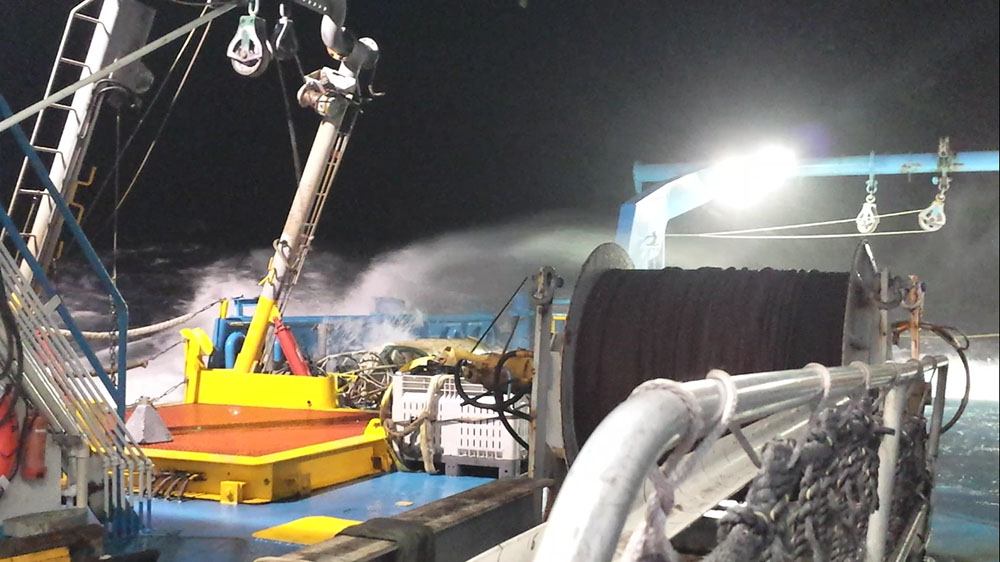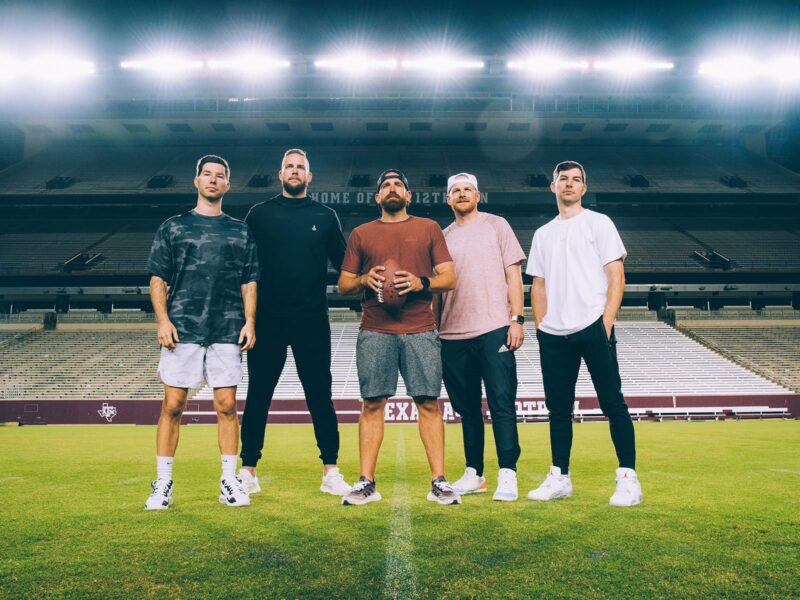On Monday Aug. 21, as the sky dimmed in Texas and the whole country paused to watch a solar eclipse, a crew of buoy technicians from Texas A&M University embarked out of Port Arthur on a routine cruise into the Gulf of Mexico to repair and replace data-collection buoys.
By Friday, their expedition had become anything but routine.
As part of the Geochemical and Environmental Research Group (GERG), in the College of Geosciences at Texas A&M, the crew was responsible for servicing a system of eight enormous buoys doing an important job in the Gulf: sending real-time ocean data to state agencies on-shore.
GERG operates the Texas Automated Buoy System (TABS), funded and supported by the Texas General Land Office (GLO), which is led by Texas Land Commissioner George P. Bush.
The buoy system is designed to collect measurements and data for aiding in oil-spill trajectory modelling off the Texas coast. But, because TABS works constantly it is also quite helpful when a tropical storm starts churning through the Gulf and forecasters need real-time data.
Four of the eight TABS buoys were on the crew’s service schedule as it embarked Monday. After losing some functionality of one of the ship’s four engines that day, the team continued on through the Gulf and finished repairing and replacing buoys. The GERG crew included: Marty Bohn, Willie Flemings, Shawn Jarnagin and Adam Luedke.
AgriLife Agents Shelter 1,000 Animals In Wake Of Hurricane Harvey
Mid-week, Tropical Storm Harvey quickly accelerated into a major hurricane. With ports closing and one of the ship’s engines weakened, they could not outrun the storm and had no choice but to weather it. Luedke said that the ship chartered for this cruise, the Brooks McCall operated by TDI Brooks, headed to the Flower Gardens area to ride out the storm.
“We spent the next several days dancing with a hurricane out in the Gulf, bouncing around, weathering 25-foot waves,” Jarnagin said.
The ship’s very experienced captain, first mate and chief engineer, privately contracted by GERG, made the safe voyage possible, navigating the storm and keeping the GERG crew safe, Bohn said.
“For the most part, this was a typical buoy cruise — that ended with a hurricane,” Bohn added.
“But, we all made it back healthy, and we all made it back safe. We’re already planning the next one. We’ve got two buoys that were impacted by the storm, which are not working after bearing the brunt of Harvey, and we’re trying to figure out how to get back out there.”
Meanwhile, GLO staff on-shore were using the TABS-gathered data, said Steve Buschang, GLO director of research and development and scientific support coordinator.
“Throughout Hurricane Harvey’s passage we monitored these sensors to help us better direct assets and predict impacts,” Buschang said. “We applaud the dedication of the GERG team and crew of the Brooks McCall and sincerely appreciate their service to the mission. Our thoughts were continually with them while they were at sea, and we are very happy for their safe return.”
TABS is an essential observing system for the state, and keeping it functioning is very important, said Dr. Anthony Knap, GERG director and professor in the Texas A&M Department of Oceanography. “The dedication of the GERG team to providing service to the GLO, the State of Texas and Texas A&M University is commendable, and we greatly appreciate their efforts,” he said.
“The experiences we had during the hurricane are good examples of the challenges we face to collect observations in the open ocean,” reflected Dr. Steve DiMarco, GERG team leader for ocean observing and professor of oceanography. “The performance of our technicians at sea is a testament to their tenacity, getting a job done that provides important information that helps protect Texans’ lives.”
To see the TABS real-time data, go to tabs.gerg.tamu.edu.
###
This story by Leslie Lee originally appeared in Geosciences News.





